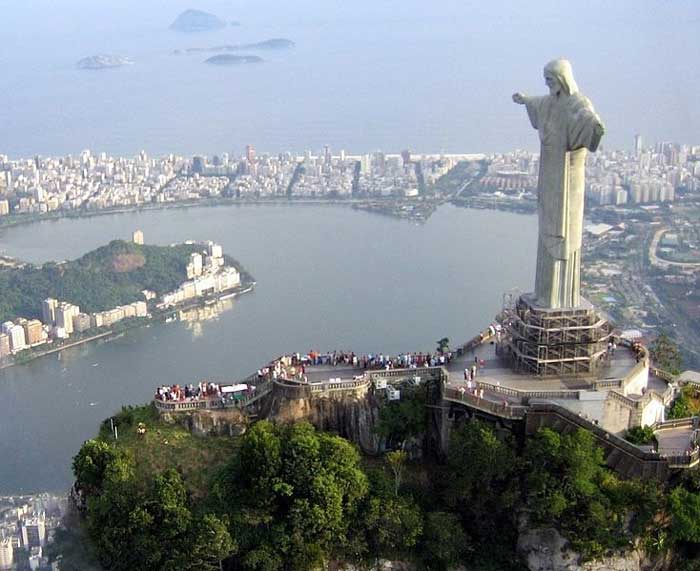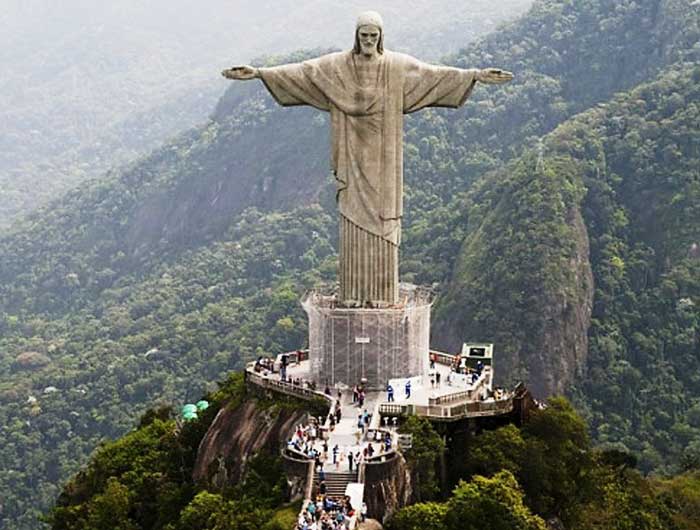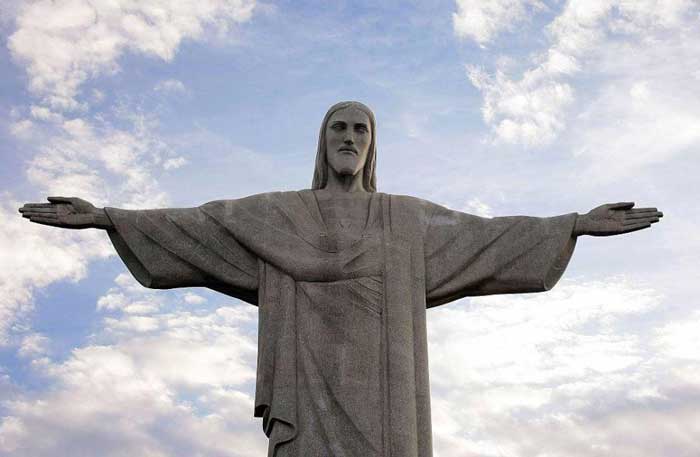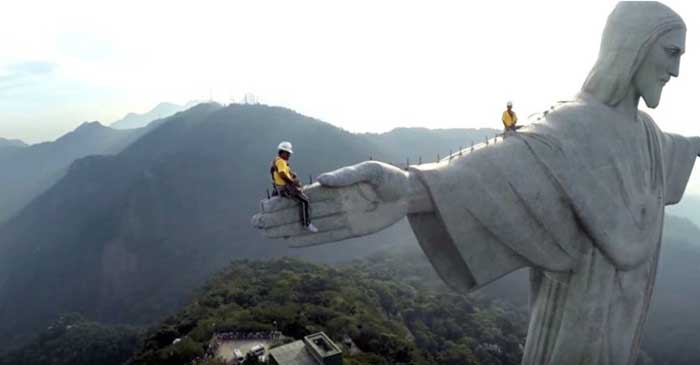
Located at the summit of Mount Corcovado in Rio de Jeneiro, Brazil, Christ the Redeemer is an unusual and colossal statue of Jesus Christ. Considered as a symbol of Christianity across the world, the towering Art Deco statue is recognized as the cultural icon of Rio de Janeiro and is listed as one of the New Seven Wonders of the world.
The history of the statue can be traced back to the mid 1850s, when the Vincentian priest Pedro Maria Boss suggested to erect a monument on the Mount Corcovado to honour Princess Isabel, the daughter of Emperor Pedro II and the princess regent of Brazil. But, the proposal remained only in the papers and was finally discarded. However, after WWI, the Catholic circle of Rio became very much apprehensive, as they felt that, a ‘godlessness’ mentality is rapidly increasing throughout the country. To combat the situation, they felt the urgent need to a take a positive step without any further delay. Soon the group became active to collect donation and signatures to support their aim to construct the statue of Christ on the Mount Corcovado overlooking the city. The designs considered for the statue included a Christian cross, a statue of Jesus with a globe in his hands and a pedestal. But the design was subsequently changed as it became ridiculously famous as ‘Christ with a ball.’

In view of the changed circumstances, the original designer, Brazilian engineer Heitor da Silva Costa, had to amend his design and in consultation with the Brazilian artist Carlos Oswald, came up with a completely fresh design. The newly designed statue of Christ the Redeemer with open arms, which typically symbolizes him nailed to or carrying a cross, was finally chosen. The responsibility of creating the statue was entrusted to Paul Landowski, a French-Polish sculptor and in 1922, Landowski commissioned Romanian sculpture Gheorghe Leonida, whose portrayal of Christ's face made him famous.
The foundation stone of the base of the statue was ceremonially laid on April 4, 1922. However, instead of Brazil, the statue was sculpted in France by Paul Landowski. He dedicatedly worked over the next several years to make the 98 feet tall sculpture in clay pieces. Later, those pieces made of clay were carefully shipped to Brazil and then transported to the top of the Corcovado Mountain by train, assembled and remade with reinforced concrete. However, on second thought, it was felt that concrete was too rough for the fine contours of Christ’s image and may not last long against the cruel bite of rough weather. Finally, soapstone was chosen to craft the tiles for the outer layer of the colossal statue. This material was mainly chosen for its enduring quality against bad weather and ability to resist cracking. The statue, when completed, became the largest art Deco monument in the world.


Building of the statue began in 1926 and was completed in 1931 and after its completion the statue was dedicated on October 12, 1931. Standing tall above the city of Rio, the statue of Christ the Redeemer, with its horizontally outstretched arms spanning 92 feet (28 m) is accepted as a symbol of Christianity across the world. Located at the top of 2.300 feet (700 m) Corcovado Mountain, the statue, made of reinforced concrete and clad in a mosaic of thousands of triangular soapstone tiles, stands on a square stone pedestal base of about 26 feet (8 m) high. Excluding the pedestal, the statue is 98 feet (30 m) tall and weighs 635 metric tons.
The currently 87 years old statue has gone under several extensive renovations, including thorough cleaning. Previously, the tourists had to climb about 200 steps from the train station to the statue. To make it easier for the visitors, a series of escalators and panoramic elevators were added at the beginning of 2003, to facilitate the access to the platform surrounding the statue.

In October 2006, on the 75th anniversary of the completion of the statue, a small chapel was built at the base, which was consecrated by the Archbishop of Rio and named it after Brazil’s patron saint, Our Lady of the Apparition. On February 10, 2008, during a whacking thunderstorm, lightning struck the statue, causing some damage to its fingers, head and eyebrows. However, the state government initiated the necessary steps accordingly, replaced some of the outer soapstone layers and repaired the lightning rods on the statue. Unfortunately, lightning damaged it again, on January 17, 2014 and dislodged a finger on the right hand of the statue.

The massive restoration programme of 2010 continued for four months. It included repairing small cracks and replacing the mortar, cleaning and removing a crust of fungi and other microorganisms from the soapstone mosaic covering, restoring iron in the internal structure, and waterproofing the monument. The damaged in the statue’s head and arms were repaired and new lighting fixtures were also installed at the foot of the statue. On the occasion of the unveiling ceremony of the restored statue, it was brightly illuminated with green-and-yellow lighting in jubilation of the Brazil’s participation in the 2010 FIFA World Cup.

The view from the top of the statue is simply breathtaking. It offers a 360 degree view of the entire city of Rio. Apart from the magnificent panoramic view of the three famous beaches, Leblon, Copacabana and Ipanema, one can also see the other important landmarks, such as the Jockey Club, the Maracana Stadium, and the Botanical Gardens. The ride up and down the Corcovado Mountain through the amazing Atlantic rainforest also offers an unforgettable experience of a life time.